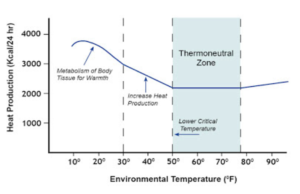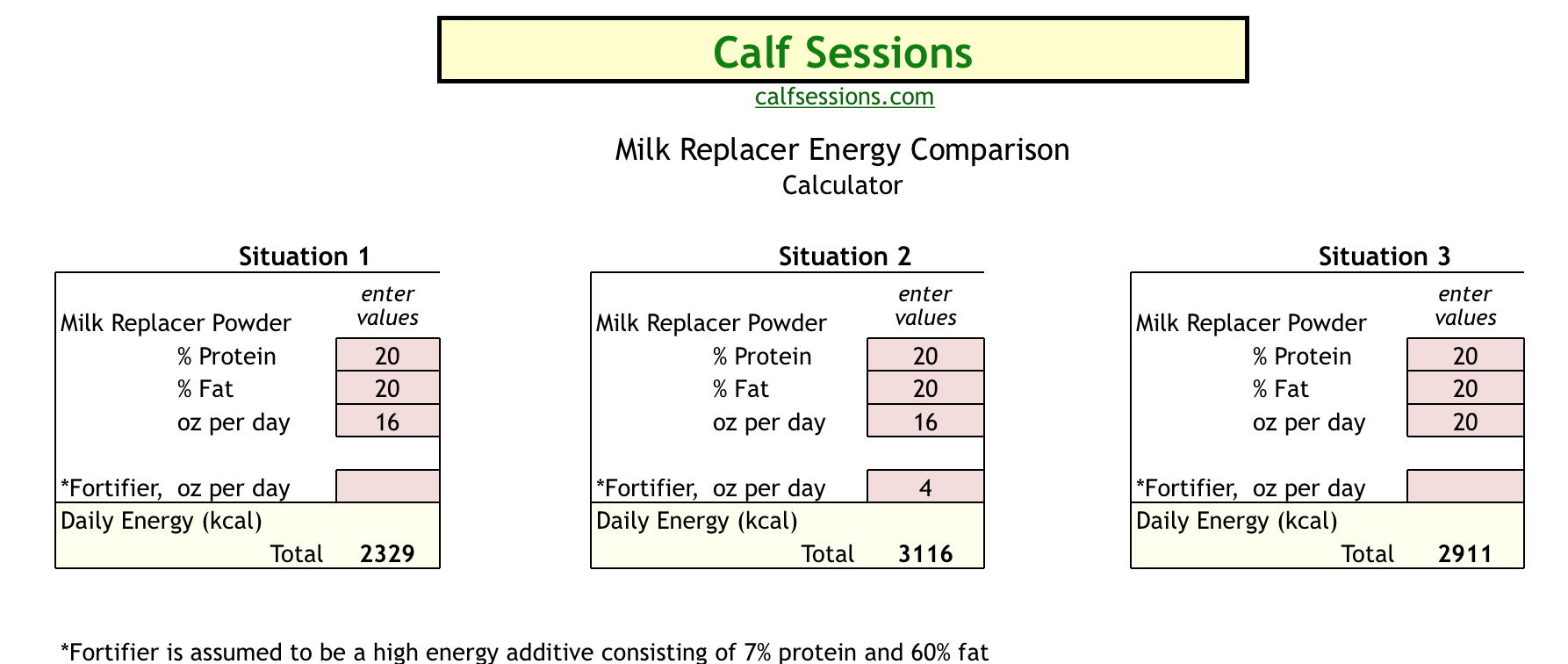~With downloadable energy calculator.
Energy intake becomes a big concern during cold weather. As environmental temperatures change so does a calf’s need for energy. The graph below shows how a calf’s body heat production relates to temperature changes in its environment. If energy doesn’t come from feed, the calf will burn its body tissue to try to stay warm. And a young calf has precious little body energy reserves.

In practical terms, a calf should consume about 1.0 to 1.3% more energy for each degree the environmental temperature drops below 50° F. Factors such as bedding, housing type, exposure to wind and sun can influence the actual effect of temperature change. Generally, as the temperature falls to 30° F the calf needs about 25% more energy than at 50° F. At 10° F, it needs 50% more energy. When it comes to actually feeding calves, most calf raisers simply switch to a winter feeding rate based on local conditions, rather than making lots of little adjustments.
When feeding whole milk/waste milk, your options to increase energy intake are limited. You can feed more milk by increasing the volume fed at each meal or add another feeding during the day. You can also work in a high energy fortifier or milk replacer, especially if milk supply is limited.
With milk replacer, you have a few more options. You can increase the total volume of milk replacer fed each day or you can increase the amount of powder mixed into a given volume of water. More than 1.5 pounds of powder per gallon takes you to 18% solids or above. So be sure calves have access to water. Concentrations above 18% solids push the calf’s limit to digest nutrients causing scours and other digestive problems. Many calf raisers choose to add a high energy supplement to their milk replacer as temperatures drop, while others switch to a higher energy milk replacer formula during winter months.
Comparing the energy provided by different feeding options can be a time consuming process. The calculator shown below makes it an easy job to compare milk replacer feeding options. Simply plug in the protein and fat percentages of a milk replacer along with the feeding rate to get the total energy provided to each calf. The calculator also lets you account for the addition of a high energy fortifier to milk replacer.
Milk Replacer Energy Comparison Calculator

Download a working copy of Milk Replacer Energy Comparison Calculator
_________________________________
Other Posts About Cold Weather and Energy Intake
- Winterize Your Calf Feeding Program As Temperatures Drop
- Calf Feeding: Cold Weather Feeding, Energy Intake & Solids Level
